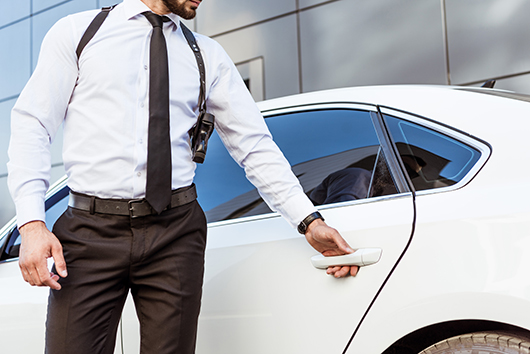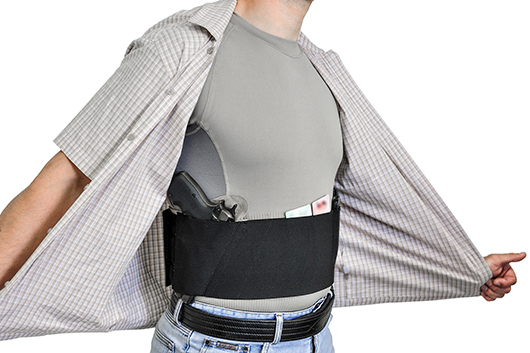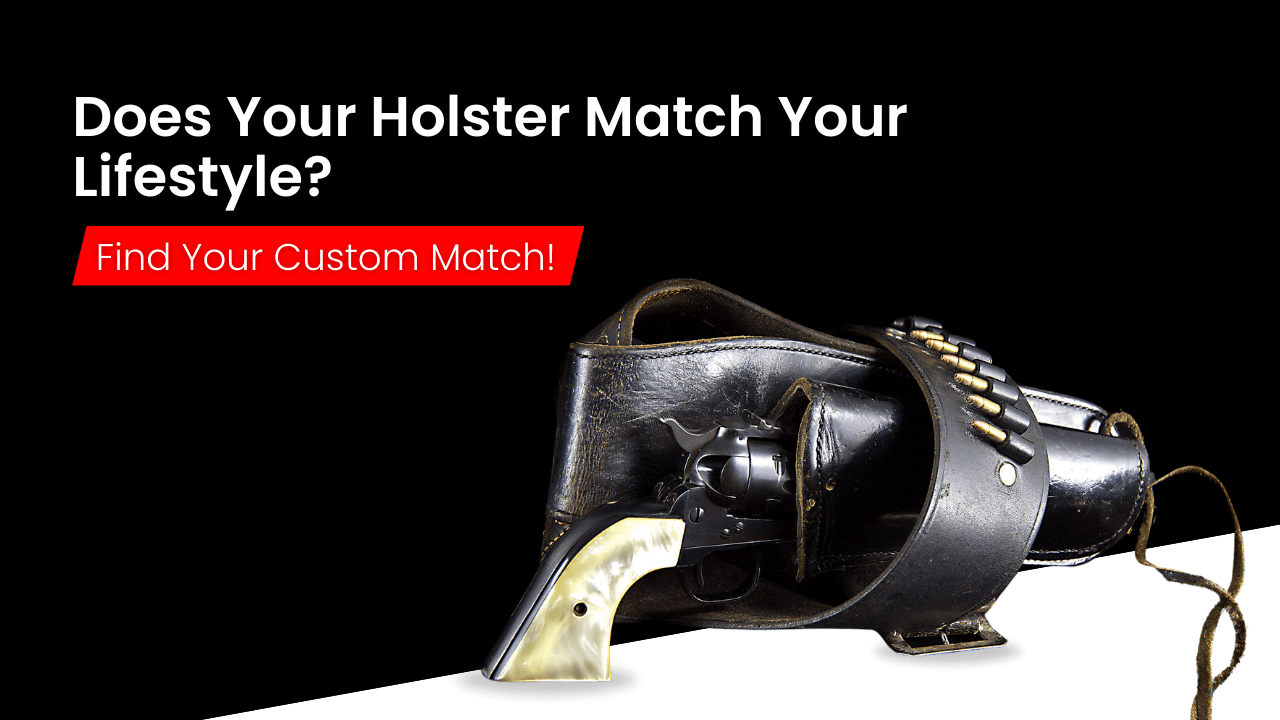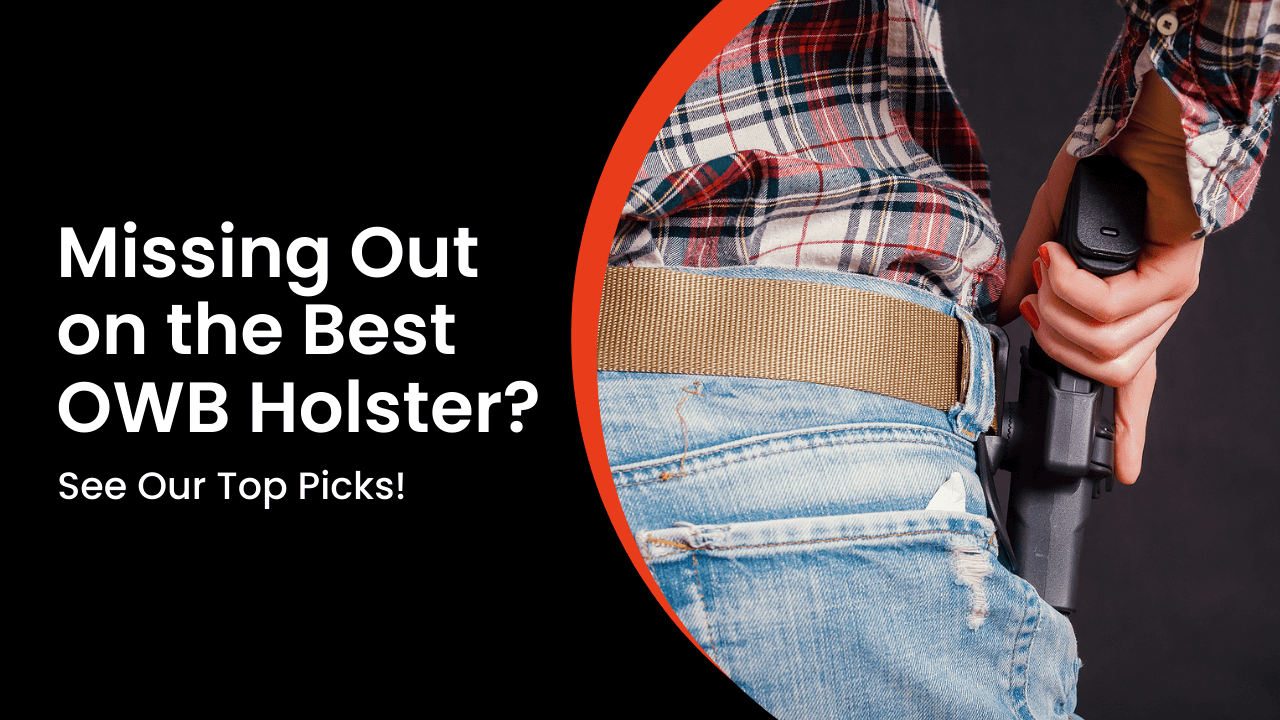Choosing Right Alternative Concealed Carry Holsters
Apr 4th 2021

Americans carry concealed handguns in a variety of different ways. The most common holster types, by far, are those that attach to a belt worn around the waist. However, you may have to consider alternative options depending on your physique, profession, or environment.
Waistband Holsters
Standard practice for private citizens and law enforcement personnel is to carry a handgun on the waistband, typically attached to a gun belt using belt clips, soft loops, or other specialized devices.
When carrying on the waistband, the two most popular positions are:
Strong-side carry
In strong-side carry, the gun is located on or behind the hip that corresponds to your dominant hand. This is typically at 9 o’clock (left-handed) and 3 o’clock (right-handed), although this can vary by two hour-hand positions in either direction. Strong-side is one of the most natural carry positions, as it places the gun directly under your shooting hand.
Appendix carry
Located at the 12 o’clock or 1 o’clock position, appendix carry positions the gun in the front of your waistband, at or beside your belly button, and behind your belt buckle. Appendix carry has gained the attention of gun owners because of the speed and economy of motion that it enables.
However, appendix carry is also considered dangerous by some due to the direction the muzzle faces when the gun is holstered. Diligent trigger discipline, a holster that doesn’t deform or collapse, and re-holstering your gun carefully should all work to minimize the risks associated with this particular carry method.
IWB or OWB
Regardless of the position that you choose, you can carry IWB or OWB. Inside-the-waistband or IWB holsters are ideal for concealed carry, positioning the holster between your body and waistband. The result is a more discreet carry option that is less limited by your clothing choice.
Outside-the-waistband or OWB holsters, in contrast, let you position the holster externally. OWB is ideal for open carry and when carrying a concealed handgun under a jacket.
Non-Waistband Holsters

Although waistband holsters are the standard for concealed and open carry, some gun owners prefer alternative concealed-carry holsters for various reasons. These types of holsters include the following:
Ankle holster
One of the first alternative holster designs that usually springs to mind is the ankle holster. For a backup gun, the ankle holster hides the firearm under a pants leg between the ankle and calf muscle.
If you’re right-handed, you typically position the ankle holster on the inside of your non-dominant leg. This method of carrying is often associated with subcompact semi-automatic pistols (e.g., Glock 26 and 43) and snub-nosed revolvers (Smith & Wesson Model 442).
While suitable for an auxiliary weapon, your primary defensive weapon should be more accessible in an emergency. The ankle holster also limits the type of handgun you can carry to something light and compact.
Belly band holster
The belly band holster is a solution to carrying a gun without a belt or waistband.
Loose-fitting clothing, such as sportswear, dresses, and skirts, often doesn’t provide belt loops or a rigid waistband to which you can attach a holster. The belly band is a wide type of elastic belt that wraps around your abdomen and secures the firearm in an elasticized pouch or separate holster.
While you can wear a belly band in conjunction with a belt, you might as well carry in a waistband holster if the option is available to you.
Shoulder holster
The shoulder holster is another example of a classic alternative to traditional IWB and OWB options. In a shoulder holster, you wear a gun under your non-dominant arm using a harness. Depending on the model, it may also include one or two magazine pouches under the dominant arm.
The shoulder holster is a classic of crime dramas and action films. There are, however, both advantages and disadvantages to the shoulder holster for the private self-defense practitioner.
Pregnant women and individuals with a more pronounced beltline will find a shoulder holster more comfortable to wear. If you spend prolonged periods driving or sitting behind a desk, having your weapon under your arm is more practical when navigating a seatbelt.
Furthermore, from a tactical perspective, the shoulder holster allows you to reach for and have your hand on your gun in a more conspicuous manner than if you were carrying your gun on the right hip.
On the downside, drawing from a shoulder holster tends to be slow compared with waistband options, and you need to wear a suitable cover garment, which can complicate carrying during the warmer months.
There’s also a safety concern with shoulder holsters. There are two types of shoulder holsters in everyday use: vertical and horizontal. In the vertical type, the handgun is carried with the muzzle pointed downward toward the ground. In the horizontal type, the handgun is carried with the muzzle pointed behind you.
Pocket holster
Carrying a subcompact handgun in your pants pocket is an effective alternative for some; however, pocket carry still requires an appropriate holster. Don’t simply place a handgun inside a pants pocket — this can be a safety hazard. The holster serves multiple purposes, of which retention is only one.
A holster also protects the gun from foreign debris and contaminants. The pockets of your pants may contain lint and loose items that interfere with the gun’s functioning, especially if its action is relatively open, like with a revolver.
Furthermore, you don’t want anything else you’re carrying to enter the gun’s trigger guard. Pocket carry is limited to the same classes of firearm as ankle holsters — compact and lightweight.
Practice is Critical
Whatever type of holster you choose for your concealed-carry needs, ensure you practice with it extensively. If, for example, you intend to carry your gun in a holster on your right hip at the 4 o’clock position, don’t practice drawing from a cross-draw holster on the firing range.
Practice with the carry method you intend to use, and you’ll increase your effectiveness in self-defense. Remember, what you train to do is what you’ll do under stress.
The Right Holster For You
At Incognito Concealment, we manufacture high-quality Kydex waistband holsters. However, we understand that what’s right for you is a highly personal matter. Your needs may call for a specialized holster, and we’ll help you make the perfect choice. Give us a call at (586) 999-5820, and we’ll guide you through our inventory.











